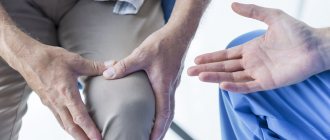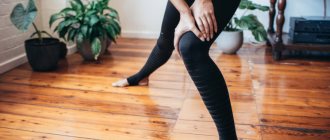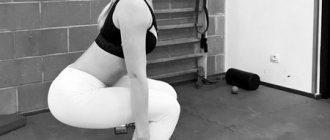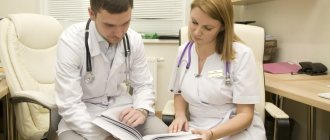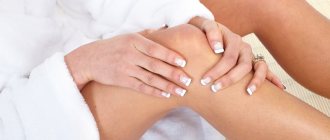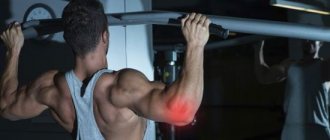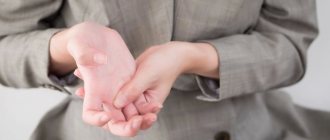Knee pain after running is not uncommon, even among people who exercise regularly. There can be many reasons for this - from injuries to ordinary fatigue of the knee joint.
In this material we will try to cover in detail all the reasons that can cause knee pain. We'll talk about why knees hurt during or after running, why pain can occur in beginners or professional runners, and also give advice on what to do in such situations.
Why do my knees hurt after running?
Not only the knees can hurt, but also the hip joints, lower back, spine, and all together at the same time. The fact is that running is accompanied by constant impacts of your feet on a hard surface with a force several times greater than your own weight. Through the leg, the impact is transmitted to the pelvic bones and spine, especially if your running technique was not taught to you by a coach with 20 years of experience. The result is knee pain a couple of weeks after starting training.
Is this arthritis, you ask? At a young age, arthritis as such may not exist. The knee joint has a complex structure; it is enough to stretch the ligament and pain is guaranteed. In adolescents, pain may be caused by Schlatter's disease. In people over 45 years of age, after improper running, there is a very high likelihood of developing traumatic arthritis and subsequent arthrosis of the knee joint.
Runner's Knee, Jumper's Knee, and Cyclist's Knee
“Runner's knee” is a collective term that covers a variety of conditions. This is not a medical diagnosis. Most often, runner's knee refers to patellofemoral syndrome. Runner's knee is also sometimes called IT Band syndrome or iliotibial tract syndrome.
Several other very common conditions that occur among runners are jumper's knee, or tendinitis of the patellar tendon, and cyclist's knee, or pes anserine tendonitis. It is these diseases that runners most often contact for pain in the knee joint.
How not to run
- Early in the morning, as soon as you wake up, it’s easy to get injured at this time.
- Without warming up, without warming up, the risk of injury increases to almost one hundred percent.
- It is not recommended to run on asphalt, which puts too much impact on the joints of the legs and spine.
So, the main enemies of the knee joints when running are: the hard surface under your feet and the cold, unheated ligaments of the legs, which tear like a tightly stretched rope in the cold. From this we can logically conclude what remedies will help us avoid knee pain after running.
It is better not to go for a run in the early morning. At this time, the ligaments are tense, the body still wants to sleep, it is not ready for active stress. You should always run only after a good warm-up. Before leaving the house, you need to work all the joints of your legs, jump, squat, run in place.
It is better to choose a road that is not the smoothest, but one with a soft surface – a dirt one. If there have already been injuries, then it is necessary to wrap the knee with elastic bandages on the advice of a doctor. Shoes must have shock-absorbing soles.
Symptoms
With patellofemoral syndrome, pain occurs in the area of the kneecap and under it. Not from below, but inside it - “from below from the inside.” Sometimes it happens just a little along the outer or inner edge of the kneecap. The pain, quite acute, begins while running, usually right at the very beginning of the workout.
If we are talking about the problem of the patellar ligament, or “jumper’s knee,” this is also pain in the area of the anterior part of the knee joint, but not in the cup itself, but immediately below it, from below. There is the so-called patellar ligament, almost a continuation of the quadriceps tendon. And she will hurt under the kneecap, there will be pain during training and the next day. They become quite intense when accelerating, running downhill, and the next day when walking down stairs.
The typical location of pain in iliotibial tract syndrome is in the middle of the knee joint on the outside. The pain (it is not even in the knee itself) occurs due to friction of the so-called iliotibial tract on the lateral condyle of the femur. The pain will be on the side. Very characteristic pain sensations that appear towards the end of the workout. The pain increases with acceleration. It is important that the next day it will hurt to walk down the stairs.
Training plans for marathon and half marathon. and start preparing today.
Similar symptoms for inflammation of the crow's foot ("cyclist's knee"): especially noticeable pain the next day; strengthening towards the end of the workout.
Sometimes pain occurs at the beginning of a run, after warming up it decreases - but towards the end of the workout it still returns. It will also be painful to walk the next day. But the pain is localized from within. That is, the place of pain with “cyclist’s knee” is the inner surface of the knee joint. And it happens both at the level of the knee joint and slightly below it on the inner surface, because the attachment of the goose foot extends about another 5 centimeters below the level of flexion in the knee joint.
What can happen if you run incorrectly?
- Arthritis of the knee joint - from frequent strong impacts of the heel on the asphalt.
- Exacerbation of a disc herniation is also caused by impacts that are transmitted through the legs to the spine.
- Foot injuries - if you run for a long time on a hard surface without shock-absorbing sneakers.
- Neuroma is a painful thickening of the nerve on the sole of the foot that is difficult to treat.
- Runner's toe - injuries to the toes caused by too narrow shoes when hitting the asphalt. The nail may turn black and cause severe pain.
"Risk zones"
The first is people with high weight, more than 90 kilograms.
The second is people without any sports background who start running too quickly (or they had a sports past, but several years passed between the last physical activity and return to sports). All office employees who suddenly decide to run a marathon are at risk.
A much rosier picture is for someone who, for example, went to the gym, ran there as a warm-up, but at some point decided to make running the main load.
At risk are people with orthopedic problems - with longitudinal, transverse flat feet. Also at risk are runners who have a history of musculoskeletal problems, including people with fractures or knee surgery.
I haven't noticed that knee injuries affect people of a certain gender. According to my observations, if a man comes to an appointment, it means that he already has an advanced case.
Men are more inclined to self-medicate, to be patient, to run away. Women are more sensitive to their health. And a woman with a not very pronounced injury is more likely to come than a man. Therefore, in general, it may seem that women are more susceptible to knee problems.
For whom running is generally contraindicated?
There are several categories of people for whom running as a healing technique is contraindicated. These include:
- People with sore leg joints.
- Overweight people.
- Pregnant and new mothers.
- All patients with “back problems” (scoliosis, osteochondrosis, etc.) should personally consult their doctor.
If you follow all these tips, you can protect yourself as much as possible and minimize the risk of injury. Then your wellness activities will actually bring benefits, and not injury. But it may turn out that it is not possible to comply with all the conditions for safe running. In this case, it is better to replace running with less traumatic exercises.
Prevention measures
It is easier to prevent a problem than to treat its consequences later. To avoid injury and reduce the risk of developing chronic diseases, follow these simple rules:
- Increase your running volume gradually, each week by no more than 10% compared to the previous one. Make a detailed lesson plan.
- Before starting your workout, take 5-10 minutes to warm up your muscles.
- Watch your running technique and correct foot placement.
- Run on a flat surface, avoid rough terrain with obstacles. It is ideal if there is a special path with a soft rubber coating in the park or square.
- Buy sports sneakers with a firm heel, flexible toe, and projection. Shoes should support your foot, but don’t overdo it with tight lacing.
- Use knee pads to avoid damaging your kneecap. This is especially important if there has been a history of trauma.
- After finishing your run, cool down. These are light physical exercises that smoothly bring the body into a state of rest.
Treat your knees with care, do not immediately take on heavy loads, then your workouts will bring benefits and positive emotions.
And in our catalog you can find various running shoes. As an example, we suggest you familiarize yourself with the Asics GT 2000 9 G-TX sneakers.
What safer way can you replace running?
- Swimming in the pool is not only safe for joints, but also helps treat osteochondrosis, arthrosis, poor posture and a host of other diseases.
- An exercise bike is a good replacement for running if you have back problems. If your knees hurt, then cycling can also cause harm.
- Rowing machine - allows you to pump not only your legs and back, but also your shoulder girdle. Contraindicated for back and knee problems.
- An elliptical trainer is a good replacement for running, it does not put a shock load on the joints, and allows you to use your arms in training.
If pain occurs during training or competition
If pain occurs during a competition, then the most reasonable thing is to leave the race.
A more subtle point is what to do if your knee hurts before a competition or you just know you have knee problems. First, it is advisable to consult a doctor to make sure that it is not some kind of creepy thing. If the pain is mild, then it is permissible to take some NSAID tablet and run, for example, on ibuprofen.
This is relatively permissible: nevertheless, first the doctor must exclude the possibility of serious pathologies. Most likely, you will then have to recover longer, take a longer break, or undergo treatment for longer, but if this is a competition for which you have been preparing for a whole year, then taking a pill is acceptable. But if this is some kind of serious pathology, if the pain is intense enough, then it is advisable to quit the race.
I very often see people who endure until the finish line, limp, and then undergo treatment for six months, a year. Therefore, if you get sick right on the course, then you shouldn’t continue the race.
What can you do immediately after the competition? To mitigate the effects of running injuries, I always recommend icing the painful area. Apply ice wrapped in a thin cloth three times for five minutes.
Will a knee brace help?
Bandages help in certain cases. However, it is worth remembering that a doctor should select it. This is a remedy that helps restore ligaments, but a bandage cannot correct a serious problem. You can wear it while jogging, walking and various exercises.
If you use a bandage on a regular basis, it can lead to addiction and weakening of the muscles. Therefore, it is recommended to wear it only during recovery.
Principles of exercise therapy for arthrosis
The exercise therapy complex may include exercises in sitting, standing and lying positions. The main rule is that performing them should not cause pain, otherwise they can cause harm. After each exercise, you need a short break, which will help avoid exacerbations due to intense training.
In order for physical therapy to be beneficial in the treatment of arthrosis and osteoarthritis, it is important to follow simple principles:
- exercise regularly, ideally every day, and even better, for a few minutes throughout the day;
- increase the load gradually;
- move at a slow pace, without sudden jerks and other “feats”;
- if the lesion affects a limb, perform the exercise first on the healthy leg or arm, and then carefully move to the damaged joint;
- during an exacerbation, stop any physical activity.
With the help of exercise therapy you can improve muscle flexibility, maintain joint mobility and get rid of excess weight
Should I tolerate knee pain?
Pain can be different: there is good pain, there is bad pain. Good pain is muscle pain, and many people are familiar with it. Muscle pain associated with lactic acid “runs away”, your condition improves from workout to workout - in this case, the pain can be tolerated.
There are also adaptation pains that occur in people who are just starting to run or mastering new volumes. How to recognize this type of pain?
It doesn't have to be in any specific place. The pain should be “smeared” over the entire knee - and always on both sides. Should take place no more than 2 days after training. Better - within 24 hours. This kind of pain can and should be tolerated - it’s just an adaptation of the joints.
But if the pain is one-sided, there is a pronounced point of pain, then it cannot be tolerated. There is a high probability of pathology. Most likely, you won’t be able to run across, but it’s easy to make the situation worse. And then you will have to undergo treatment for a long time.
What muscles should you train to prevent knee pain when running?
The most important muscle groups here are the gluteus maximus, gluteus medius, and quadriceps. These muscles need to be pumped. There are also muscles that need to be stretched - these are also the quadriceps and calf muscles. The short gastrocnemius muscle greatly affects knee pain.
Other preventative measures include cool-downs, warm-ups, and the use of a foam roller. It is important not to overload, follow the coach’s plan, and, in principle, work out with the coach. You need to listen to your body. If you feel that the fabrics cannot stand it, then you need to be able to stop in time. Run in good, proper shoes and change them regularly.
What are the differences between exercises during exacerbation and remission?
Experts recommend performing gymnastics for arthrosis both during exacerbation and during remission, however, the tasks of exercise therapy in these cases will be different, as will the degree of physical activity.
During an exacerbation of arthrosis, physical therapy is aimed at:
- improvement of lymph and blood circulation in the joint;
- muscle relaxation;
- pain reduction;
- increase in joint space.
During this period, in the absence of inflammatory processes, it would not be superfluous to use more effective methods of treating arthrosis, for example, intra-articular injections of Noltrex to restore synovial fluid. Because exercise therapy itself does not provide a therapeutic effect.
In the remission stage of arthrosis of the hip joint, for example, after a course of injections of a synovial fluid substitute, you can perform the following set of exercises:
After a course of injections, a period of stable remission will begin, which will last, depending on the severity of the disease, 1-2 years. During this time, activities that:
- strengthen the muscular-ligamentous apparatus;
- restore the functions of the damaged joint and tissues around it;
- will restore self-confidence to the patient and give him energy for his usual lifestyle.
After a course of Noltrex injections, you will be able to return to your usual physical activities.
What to do with chronic pain syndrome?
Note : This section is for informational purposes only. If you suffer from chronic pain while running, we highly recommend seeing a doctor and undergoing a full diagnostic evaluation to determine the true cause of your pain.
If you experience persistent pain in your knee joints after running, it is recommended to first determine the type of damage. If this is due to a fall, then stop running for a while. If this is caused by overuse, using a knee brace may help.
© ChiccoDodiFC — stock.adobe.com
Often, a knee brace helps not only to relieve symptoms, but also to restore damaged areas over time. In addition, if constant pain occurs, it is worth taking a course of minerals, in particular calcium. If you are using medications that dry out your ligaments and joint fluid in any way, it is recommended that you stop using them.
Such drugs include:
- diuretics;
- thermogenics;
- some types of AAS.
In any case, it is necessary to determine the cause of knee pain before moving on to radical methods. Sometimes knee pain indicates serious tendon and ligament injuries. This is a common issue that most professional CrossFit athletes neglect during competition season.
